Table of Contents
They say the beginnings are always the hardest. This might not apply to absolutely everything in life, but in fitness, it applies twice as much. Every day, many people decide to make their first step towards their better self. Some of them have to take that first step once a week. The goals and motivations vary, but generally, they have to do with wanting to lose some weight or gain muscle mass. Many of us were no doubt first driven by the dream of sporting a beautiful six-pack.
However, this for some of us perhaps superficial reason might eventually grow into appreciating the joy of exercise itself, together with the effort towards living a more healthy lifestyle. The first trainings are, however, usually full of mistakes. Especially when there’s no fitness coach around to help you through the basics. If you’re new to the fitness world, this article will be your ticket right in. We’ll bring you 10 tips that will help you ease in without unnecessary mistakes and keep up your will and motivation to keep working out not just on day one, but month or even a year in.
Your first steps into the gym, or why even start working out in the first place?
The beginnings of your journey should be standing on a solid base that emerges from a good reason to start in the first place. Are you trying to feel better? Dream of a beautiful body? Or is your goal a healthier lifestyle, which can ultimately lead to a longer and healthier life?
The health benefits of working out are more than obvious and take effect no matter your age, sex, or physical fitness. The first thing to know is that regular exercise doesn’t only bring a leaner figure or bigger muscles. There’s, in fact, a whole lot more to gain from it.
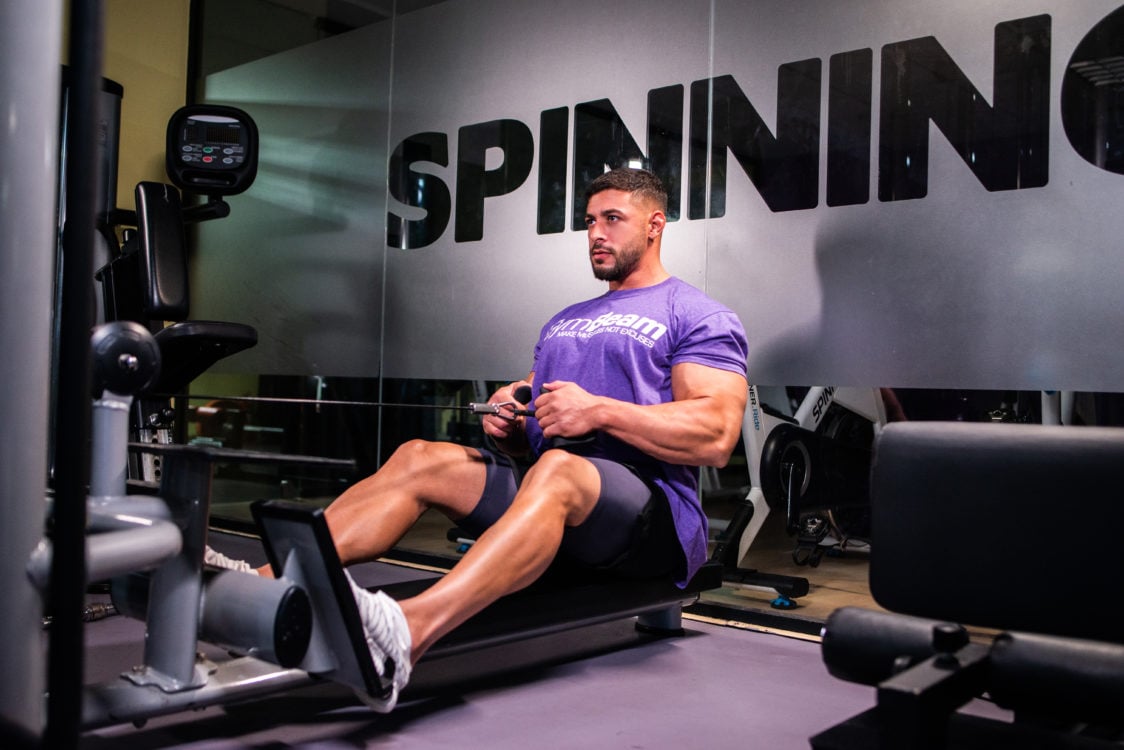
Some of the best reasons to begin are:
- More effective weight loss – working out can prevent you from gaining too much weight, and boost your ability to lose the excess weight you already have accumulated. The simple fact is, that as long as you perform physical activity, you burn calories. The more intense your training is, the more calories you get to burn, and any physical activity at all is generally better that none. This is what makes strength training in particular so popular – it can make you burn through more energy even several hours after the workout itself. This phenomenon is known as EPOC, or excess post-exercise oxygen consumption. [1]
- Higher odds of living a longer life – physical activity of any kind (such as doing sports) can help you prolong your life. This is due to the fact that it improves your cardiovascular health and helps reduce the risk of developing cardiovascular disease. It also positively impacts your sleep, strengthens your immune system and reduces cholesterol levels. All of these benefits brought together have an impact on your overall health and lifespan. [7] [31]
- More happiness – thanks to the heightened production of endorphins in your body, exercise improves your mood and reduces feelings of anxiety and stress. It also has a positive effect on the production of hormones serotonin and norepinephrine (noradrenaline), which can alleviate feelings of depression. [2 – 3]
- More energy – one study has found out that within a span of 6 weeks, regular exercise helped the participants overcome excessive tiredness they had previously suffered from. Working out has positive effects on our body cells’ mitochondria – also known as the powerhouse of the cell, which transform the energy our bodies need to function. This can ultimately impact our overall sense of energy levels and reduce feelings of tiredness. [4]
- Exercise improves sleep quality – A research using senior citizens as participants has shown that a regular training program can improve sleep quality, and reduce the amount of time necessary to fall asleep at bedtime. Another study produced similar results, where after sixteen weeks of aerobic physical activity, the participants who previously suffered from sleeping disorders were observed to sleep better and longer, and have self-reported feeling less tired after waking up. [5 – 6]
- Exercise improves the health of your heart – one of the great possible benefits of doing exercise is that it improves your cholesterol levels, reduces your blood pressure as well as the risk of developing cardiovascular diseases. CDC (The Center for Disease Control and Prevention) recommends at least 150 minutes of medium-intensity physical activity a week. WHO expands this recommended time to 150 – 300 minutes of aerobic physical activity of medium intensity, and applies this recommendation to everyone from 18 to 64 years of age. In case of higher intensity of activity, the recommendation sits at 75 – 150 minutes. [7 – 8]
- Improving your bone health – doing sports is generally known to improve the health of bones. This is because it helps increase the bone density, making bones stronger, and slowing bone mass loss which is a natural part of ageing. It is therefore important to exercise regularly, ideally several times a week, instead of binge-exercising just once a month. Bone health benefits particularly well from strength training, hiking, walking, tennis, or dancing. [7] [9]
If you’d like to learn more details about the benefits of exercise, check out our article on 9 Great Reasons To Start Exercising and How To Do It.
You might be interested in these products:
Mistakes are the essence of life, but avoiding them makes you more effective
The beginnings are often replete with mistakes. Many of us have sedentary jobs, sitting behind computers in offices all day. We often go to gym after work and get right to it without a proper warm up. It’s quite common to see beginners reach for heavy weights immediately after entering the gym. What’s more, many often underestimate proper regeneration and fluid intake, putting all of their energy into single-mindedly trying to atone for a weekend spent drinking and eating badly, which more often than not, leads to frustration at lack of results. Another common complaint has to do with the amount of time that’s necessary to spend on training, without realizing how much of that time is frequently dumped into mindlessly scrolling through apps on our smartphones while in the gym.
A particularly insidious enemy of a beginner can be found in having too much motivation that leads to using excessively large weights and ignoring proper exercise technique. This is especially dangerous and can easily lead to an injury.
Ten tips for the beginners
To help you avoid unnecessary issues right from the beginning and make sure you’re off in the right direction, we’ve prepared these ten tips that will help you ease into your journey in the gym.
1. Be SMART when setting your goals.
As soon as you enter the gym world, try setting up your goals as clearly as possible. Your goals should cover several crucial criteria. Doing so will make sure you will stay motivated and achieve the desired result. When planning, it’s best to stick to the well-established SMART method, which will introduce these important criteria to your goal setting. Your goals need to be [10–13]:
- Specific – it’s not enough to say that you simply want to lose some weight or lift heavy weights. Put your goals into specific numbers, for example: I want to lose 10 kilograms of weight, run 10 kilometres on a track or lift 50 kilograms on a bench press.
- Measurable – if you can’t quantify your goal, you won’t be able to tell how far along you’ve already made it. If your goal is to lose 5 kg of weight, you’re going to need to know what your current bodyweight is, and keep consistent track of your progress by measuring your weight regularly. Partial successes are great for keeping up your motivation and moving towards your ultimate goals.
- Achievable – if you aim to high or try doing way too many things at the same time, it’s very likely that you’ll eventually fail at achieving your goals. Be realistic, know your limits and stick to one single goal. If it’s your first time in the gym, and you aren’t in your top shape, it’s not pertinent to expect yourself to lift 100 kg on the bench press, or that you’ll instantly become the squat champion eclipsing everyone who’s been going to the gym for years. One example of a realistic goal is expecting to be able to do 20 push-ups with your own bodyweight within 2 months. To make your goals achievable, it’s also advisable to divide them into smaller, more partial goals. Losing 4 kg within 2 months might look like a lot, but doing only 0.5 kg a week is not as bad, and sticking to it will eventually lead you to the four you’ve got planned.
- Realistic – whenever you’re picking a goal, you really have to consider why it’s what you want. Are you getting ready for a specific competition? Are you trying to lose weight because you want to fit into that fancy dress you’ve picked for your friend’s wedding? Do you want to be healthier and be in a better shape? All of these reasons are reasons for staying physically active. Everybody has to find their own. That’s the only way to make your goals relevant to you, and by the same token sustainable in the long term.
- Time-based– having a certain amount of time pressure is not always a bad idea. Saying you want to lose 5 kg isn’t quite enough. What you need is to add a time frame, which will make it “losing or gaining 5 kg in 3 months”. To have a better idea of how to set a realistic time frame, the ideal rate of weight loss is about 0.5 to 1 kg a week. [32]

2. Work over your fear of the gym
If you’re terrified of the idea of visiting the gym for the first time, you’re not alone. A recent poll indicates that there are people who do no exercise at all, and to top it off [15]:
- They consider the idea of visiting the gym terrifying
- Would rather sit in a dark room with a spider than go to the gym on their own.
- Would rather get injected with a syringe than visit a gym.
- Would rather give up their phone for a day than go to the gym on their own.
- Are insecure about visiting the gym because there’ll be people who are in better shape than themselves.
- Think of the squat rack as the most terrifying post in the gym because they don’t know what weight to put on.
- Are scared to ask any of the gym staff for help.
Many beginners are simply afraid of making fools of themselves upon entering the gym. This is often due to them not knowing how to use a variety of machines or not having the proper technique for exercise. The simple solution to this problem is to ask questions. Don’t be afraid to ask any of the gym staff or the coach for help. They will happily show you how to use any of the equipment. That’s what they’re there for, and you can be sure you won’t be the first nor the last person to ask about any of it. In fact, you’ll be surprised to find that many more experienced gym visitors themselves will be glad to help you out during their breaks in between sets.
The community of gym goers is, in fact, very open, and virtually anyone with experience will be happy to help you out and give advice. Thinking about someone watching you from the side is therefore completely pointless. Focus on your goal, on every move you make, and if you feel like it, get some extra support from a pair of headphones connected to a pumped up playlist.
If you’re feeling stressed out about your first group session, have a chat with your coach beforehand. Another thing you can do is go watch one of the sessions or classes as an observer. Either way, introduce yourself to the coach and don’t be scared to ask about anything that might not be clear to you. Additionally, you should be well-acquainted with any possible health-related restrictions you might have going on, and convey those to your coach too. Remember, this is the person whose job it is to answer any questions you might have and direct you on your athletic journey. To overcome the initial fear of the gym, you might also want to try going at a less frequented time, when the place isn’t crowded.
Approach the reception desk and ask what time the usual rush hour is, and what times are normally less busy. Most people go to the gym between 4 and 7 PM, after finishing their work or school day. The least busy hours are often just before midday, during the lunch break, or later at night. Another great strategy is to come along with a friend you’ve managed to talk into some group trainings.
Finally, you can prepare yourself by checking out the website and social media sites of the gym you’ve picked beforehand. These often offer a lot of pictures that show what the gym looks like. You can see what equipment it uses and prepare for using the variety of machines at home by looking up how they’re supposed to be used on YouTube. What’s more, a gym’s website can introduce you to a lot of useful information involving trainings, its staff and so on. However, despite all of this, the most crucial step for a beginner remains making sure you take your first sessions under a supervision of an experienced fitness coach.
You can either find one based on references, or directly in the gym you’re heading out to. Fitness coaches are mostly employees working for the gym, and the reception desk staff will be happy to introduce you to them. An experienced instructor will help you overcome the fear really quickly, and what’s more important – will teach you the proper exercise techniques. Hiring a coach might be a little more costly than going to the gym on your own, but it’s well worth the extra cost, at least for the few initial sessions. Otherwise, you risk months of ineffective and painful gym visits that show no progress, and what’s worse threaten your health with an injury caused by improper exercise technique. [14] [16]
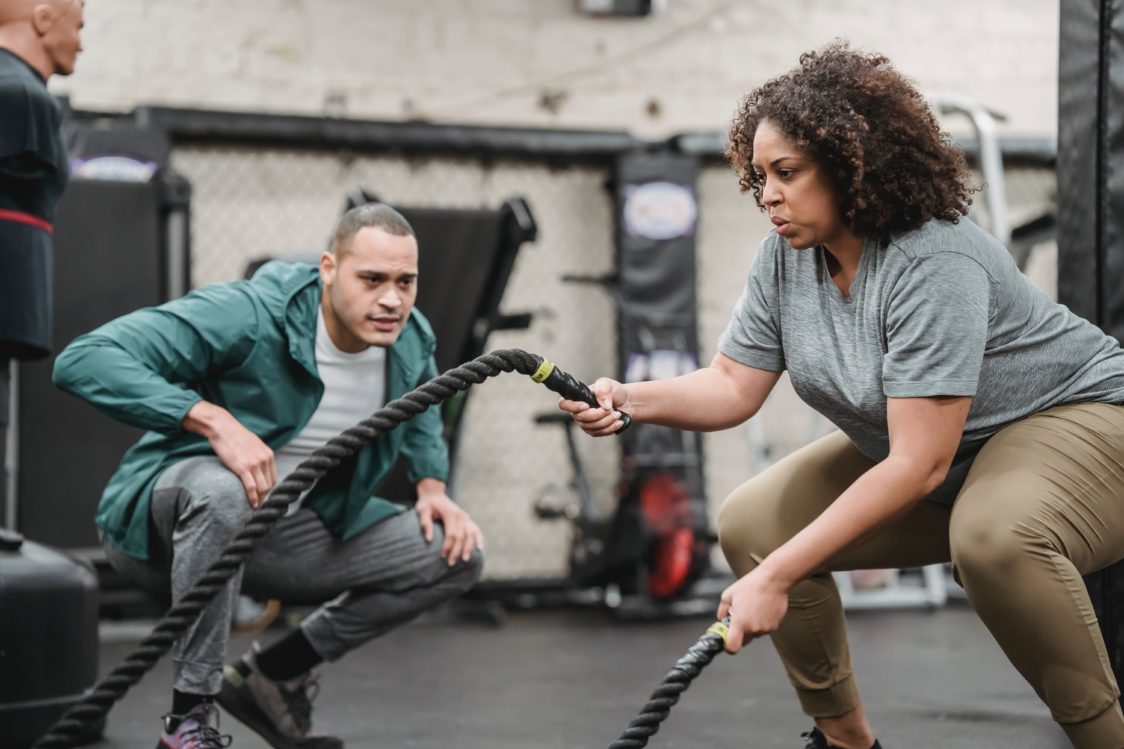
3. Develop habits
The most difficult and most important part at the beginning of your journey is to persevere. But if you decide to fight tooth and nail for a little while, it won’t take more than a few weeks to turn your new training routine into a comfortable habit. According to some sources, it takes only 21 days to build a new habit with an activity that’s repeated every day. Regarding exercise, it is crucial to allocate enough time to regeneration and have days off. However, one thing you do every single day is eating. If you manage to stick to a certain new eating habit for 21 days, it is very likely your new diet will become completely natural to you.
As for exercise, start easy. Commit to going twice a week, and stick to it. Mark your planned trainings in a wall calendar, and tick them off as you go. The satisfaction of doing so will add to your motivation. Slowly, you’ll be able to add more sessions. One fantastically effective tool for starting new habits overall is the so-called two-minute rule. This rule states that whenever you’re trying to pick a new habit, it’s more than enough to perform the desired activity for just two minutes at a time, as long as it happens in a consistent and regular fashion. [17–18] [33]
To give yourself a little boost right off the starting line, check out our article 5 Tips To Stay Active, Motivated and Never Stop Exercising Even at Home.
In practice, every new habit you’re trying to form can be collapsed into a short, two-minute learning session. Here’s an example:
- I want to start reading books before going to sleep → Start by reading a single page every single night.
- I want to do yoga for half an hour every day → Grab your yoga mat and put it on the floor.
- I want to start working out → Grab a skipping rope and do ten rope skips.
- I want to start preparing my meals a day in advance → Put some yoghurt and a few pieces of fruit into a lunch box for later.
- I want to start running → Put on your sneakers and tie them up good.
The purpose of this method is to make your habits easy to pick up. Anyone can meditate for a single minute, read a single page of a book, or tie the shoelaces on their running shoes. The strategy rests on the idea that once you start doing something good for you, it becomes easier and easier to carry on. As you go on, the thing you need to do will be progressively more difficult, but standing on a solid base. This will ensure you ease into it. These strategies are effective because they incrementally reinforce the identity you’re trying to build for yourself.
4. Don’t expect any miracles
This is one of the most common issues. We live in the world in which we can reach out for and grab almost anything we imagine. And of course, we want it right now. If the website we requested doesn’t load up within a split second, we get impatient and annoyed. We hate waiting in the line for an appointment with a GP, we hate waiting for the lunch delivery or the delivery from an e-shop that just takes forever. The desire for ever more instant gratification has become so powerful, we’re losing our patience.

Patience and discipline play a crucial role in the process. Nothing worth having comes overnight. Building up a good physical condition, gaining muscle mass or your dream body is something that can take months, if not years, depending on your point of departure. If you’ve got a few extra kilograms, they didn’t come from a single meal you’ve had in the past. Similarly, you can’t expect to wake up being 10 kg lighter after a salad dinner the night before.
Remember: easy come, easy go. Instant results can vanish instantly. Read more about this in our article Yoyo Effect and How To Fight It.
Clearly, this is not something you want to hear, but it’s a simple fact of life that needs to be accepted. It’s ultimately much more effective to instil all the changes slowly, gradually, and at a rate at which they are sustainable. You can’t just change your course by 180 degrees overnight. Patience and discipline are your best friends on the way towards your goals, and if you bring them along, your journey will end up being much easier. [19]
If you want to learn more about building self-discipline, check out our article Self-Discipline: the Key To Success in Sports and in Life.
5. Respect the progression of your training
Every training session has to start with a warm-up, which will prepare your body to the physical strain of working out. It is important, as it can help you avoid injuries and improve your performance. What’s more, it can increase your flexibility and help you reduce the muscle fever resulting from an intense training. Before you grab the weights, make sure to warm up by, for example, skipping rope, doing some jumping jacks, spending a few minutes on the rowing machine or simply by walking. A solid warm-up lasts for about 5 to 10 minutes and prepares all muscle groups of your body. [20–22]
Follow your warm-up by some dynamic stretching, which consists of circular movements of joints all around your body, from head to toe. You might remember this from your PE classes at school. The purpose of this is to improve the mobility of your joints and prevent any potential risks of injury during the training. Once you’re done with the main portion of your training, don’t forget to spend some time on the cool down, which helps your body get back to the normal state. Once you’re done working out, try a few minutes on the thread mill, stepper or stationary bike. Make sure you stretch all of your body well and enjoy your hot shower. [21] [23] [34]
However, no matter what the standard procedures are, you have to, first and foremost, listen to your own body. Most beginners aren’t used to intense physical strain every day, and it is therefore very important to keep your limits in mind. If you feel any sort of pain while exercising, it’s advisable to stop and rest for a minute. Pushing your workout through pain is never a good idea. You can easily end up causing yourself an unpleasant injury, which will prevent you from carrying on for a while. Higher intensity doesn’t always mean a better and more effective training session. [24]
6. Learn the proper technique and don’t copy the training plan of an experienced athlete
Many beginners start by learning from workout videos. This isn’t necessarily a bad idea, but you might run intro some trouble, if you copy someone more experienced improperly. This can be seen in the gym whenever a beginner tries to lift too heavy of a load too early on, trying to step up to their idols. Furthermore, this usually leads to wrong technique and movements that strain the body without proper muscle contraction, which is necessary for muscle growth.
The key to success here is the proper technique, which strategically involves muscle groups, exercising them by using a variety of movements under different angles. The better your technique, the sooner you get real results. Lifting heavier weights can wait. The most important thing is to acquire the proper technique that will work the target muscle groups. Always focus entirely on the performed exercise, maintain as much control over your muscle work as you can, contracting and relaxing. This will allow you to develop a much better control over your own body, thanks to strengthening the neuromuscular connection between your body and your brain. Once again, it is really important that the proper technique is taught to you by an experienced instructor, instead of copying someone, who doesn’t really have it down and can’t provide feedback. [25]
If you want to learn more about proper exercise technique and read up on useful more information, check out our Youtube channel.
7. Perform complex exercises
Beginners can be easily confounded by convoluted training plans packed with isolated exercises you can often see in fitness magazines and online guides. If you’ve never set foot into a gym before, such plans might not bring you any benefits. So, what exercises are the best? First of all, pick those you can perform correctly, with a proper technique that works in tandem with your mobility and biomechanics. The best exercises you can pick are the complex ones. The golden triad of the strength training are squats, bench press and deadlifts.
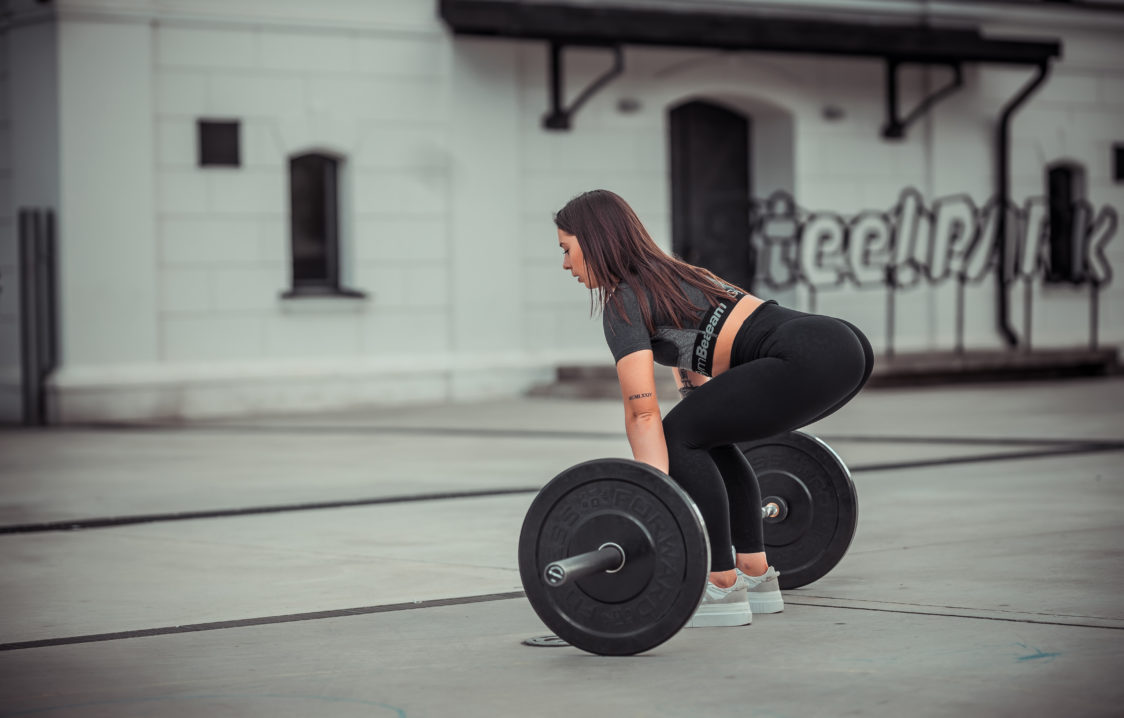
These exercises demand involving several muscle groups at the same time. Thanks to that, you’ll be eventually able to lift heavier weights, accelerate your metabolism, and reach your goals. The next step is to separate your muscle groups or movement patterns into workouts on different days. To begin, it’s enough to set up a training plan with three exercises for large muscle groups, and two for small ones. [25]
Read more about how to prepare a training plan in the article What To Eat and How To Finally Gain Muscle?
8. Adjust your diet to fit your goals
Your training efforts should always be supported by a well-balanced diet. In order to maintain healthy energy levels, you generally need to supply your body with all of the macronutrient groups, that is, fats, protein and carbohydrates. Protein helps build and maintain muscle mass. It also has a positive impact on the health of your bones, and restores damaged muscle tissue after your workout.

Some of the best sources of protein are these foods:
- meat, fish, seafood, milk, dairy products and cheese, eggs, legumes (peas, beans, all types of lentils, chickpeas, edamame), pseudo-cereals (buckwheat, amaranth, quinoa), nuts and seeds, plant-based meat substitutes (tofu, tempeh, seitan), nutritional yeast, whey protein supplements, plant-based protein supplements, or protein bars.
Foods that provide good source of carbohydrates:
- wholegrain and other cereals (porridge, flour, rice, pasta, bread and pastries), pseudo-cereals, potatoes and sweet potatoes, legumes, fruit and vegetables.
And last but no least there are the healthy fats, which supply energy during less intense exercise. Additionally, they boost your immune system, improve brain function, regulate your cholesterol levels and provide your body with many more health benefits. [26 – 27]
Among the best sources of healty fats are:
- nuts and seeds, oils, olives, avocados, butter and fat as a natural component of animal protein.
You can read more about the principles of having a balanced diet in our article: What Is a Healthy Diet and How To Learn To Eat Healthily.
Another crucial component here is to remember about proper water intake (30 – 45 ml of liquids per 1 kg of bodyweight a day), which is indispensable for maintaining proper hydration. Resupplying your body with enough liquids during exercise has an immense impact on the quality of your performance. Making sure you drink enough can also help you regenerate faster after the workout itself. This is especially pertinent to the functional drinks, the purpose of which is to restore your supply of sodium, magnesium, potassium, calcium and other important vitamins and minerals, all of which are lost through sweat during intense exercise. Once you’re done with your training, having a proper mineral supply helps you get back up on your horse more quickly. Learn more about this topic in our article How Insufficient Water Intake Affects Your Health. [28–29]
What you eat should be properly adjusted to what your goals are. Whether you’re trying to lose weight or put on some muscle mass, your eating habits and macronutrient intake should reflect the objective. For this purpose, we’ve developed this handy online energy and macronutrient intake calculator. You can learn more about this topic in our article How to Calculate Your Energy and Macronutrient Intake for Weight Loss or Muscle Gain?
9. Make an investment into the necessary equipment
A good place to start is picking proper sports shoes, depending on the type of activity you’re going for. Solid footwear is especially important in endurance sports such as running, (race)walking or biking. One great advantage of running shoes is that they are designed to weight less than regular footwear. On the other hand, if you’re going for strength training using weights, it’s advisable to use shoes that provide more stable support, which is something you’ll appreciate during strenuous squats or deadlifts. Using functional clothing can also be to your advantage in the gym. Athletic clothes are usually designed to absorb sweat, and are made of lightweight and comfortable materials, that will not obstruct your movement when exercising. Ladies in particular will appreciate a variety of sports bras designed to provide extra support for breasts.
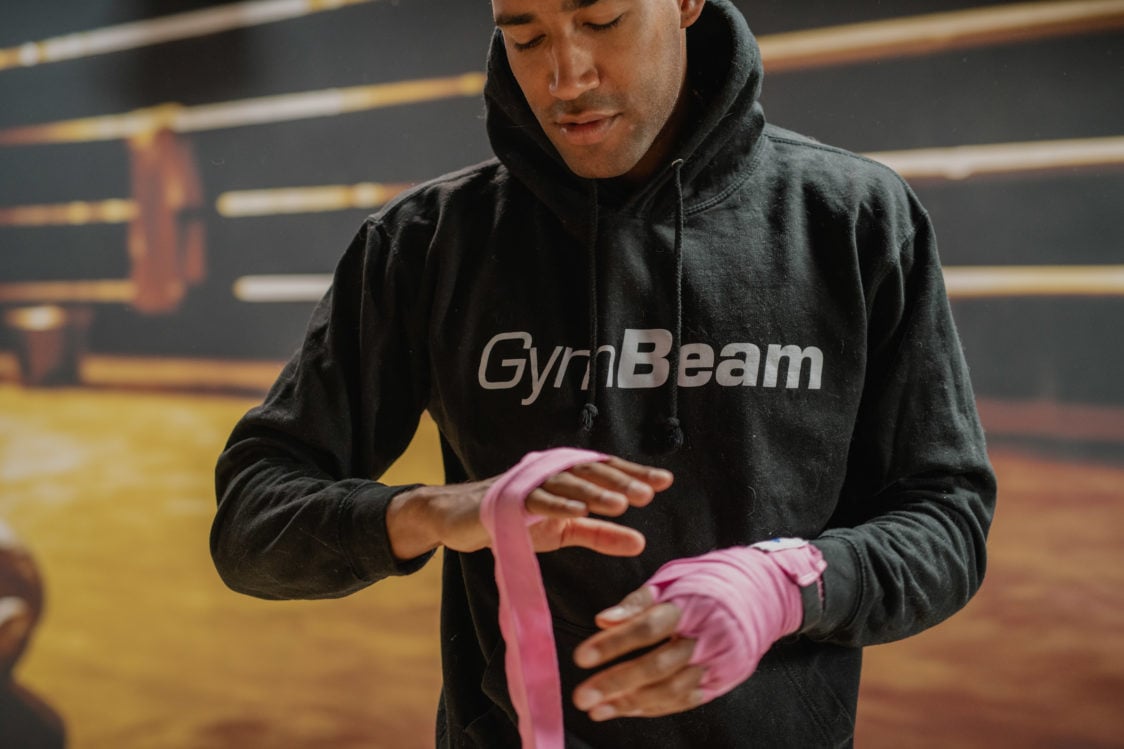
The palms of beginners aren’t used to handling dumbbells, and can develop some unpleasant calluses at the very first training. This can be avoided by using exercise gloves, which should include proper ventilation and a solid wrist support. If you’re planning to make an investment into building your own home gym, start by picking equipment and tools that are easy and fun to use, such as resistance bands or a skipping rope. It’s always a good idea to try any particular thing you’re planning on buying beforehand in your local gym so that you can figure out what works best for you. [30]
10. Make sure you educate yourself from credible sources
Without some basic knowledge about exercise and nutrition, your journey will be a lot more difficult than it needs to be. In addition to sticking to the aforementioned principles, it’s only a boon if you keep educating yourself in the area. Don’t be afraid to ask more experienced athletes for advice, and always remember to look for information in relevant and credible sources such as expert articles based on peer-reviewed scientific publications. Keep in mind that not every pseudo-celebrity is a good source of knowledge, and not every sparsely clad fitness bikini model on Instagram necessarily knows about proper exercise techniques.
If you don’t feel like reading at a particular moment, you can also turn to podcasts or check out our YouTube channel. You can also learn a lot by browsing our articles, many of which offer useful advice for beginners:
- Would you like to pick up one of the most popular sports in the world? Check out our article How to Start Running? A Simple Guide for Complete Beginners.
- Feel like you need to keep your calorie intake in check, but your busy lifestyle makes it really hard for you? Get some advice in our article Calorie Deficit: How to Lose Weight Without Losing Your Mind.
- Prefer working out at home instead of going to the gym? Definitely check out How to Build a Solid Training Plan for Home Workouts?
- Want to start working out with a pull-up bar? Don’t miss out on our article How to Work Out with a Pull-Up Bar? 10 Exercises for Both the Beginners and the Advanced.
- Want to lose weight quickly and effectively? Try our 30-Day Challenge that Will Help You Lose Weight Permanently and Teach You How to Eat Well.
Conclusion
Before you take your first steps into the gym, keep in mind that everyone’s started somewhere. Not even the most ripped guy at your local gym or the hottest bikini fitness model you know were born with the form they’re in. Everybody had to go through their own journey and everybody’s made their first steps into the gym at some point of their life. So don’t be afraid of feeling helpless and looking like a fool. The fitness community is full of open and helpful people who have the same goal as you – becoming the better version of themselves.
It’s entirely up to you how you step up to the challenge of your own goals. However, if you follow all of the advice above, you’ll certainly have a lot better shot at actually achieving them at some point. Until then, we keep our fingers crossed for you!
[1] Exercise: 7 benefits of regular physical activity – https://www.mayoclinic.org/healthy-lifestyle/fitness/in-depth/exercise/art-20048389
[2] Ipek Ensari, Brian M Sandroff, Robert W Motl – Effects of Single Bouts of Walking Exercise and Yoga on Acute Mood Symptoms in People with Multiple Sclerosis – https://pubmed.ncbi.nlm.nih.gov/26917992/
[3] Julia C. Basso, Wendy A. Suzuki – The Effects of Acute Exercise on Mood, Cognition, Neurophysiology, and Neurochemical Pathways: A Review – https://www.ncbi.nlm.nih.gov/pmc/articles/PMC5928534/
[4] Bryan D. Loy, Patrick J. O'Connor & Rodney K. Dishman – The effect of a single bout of exercise on energy and fatigue states: a systematic review and meta-analysis – https://www.tandfonline.com/doi/abs/10.1080/21641846.2013.843266
[5] Pei-Yu Yang, Ka-Hou Ho, Hsi-Chung Chen, Meng-Yueh Chien – Exercise training improves sleep quality in middle-aged and older adults with sleep problems: a systematic review – https://pubmed.ncbi.nlm.nih.gov/22884182/
[6] Kathryn J Reid, Kelly Glazer Baron, Brandon Lu, Erik Naylor, Lisa Wolfe, Phyllis C Zee – Aerobic exercise improves self-reported sleep and quality of life in older adults with insomnia – https://pubmed.ncbi.nlm.nih.gov/20813580/
[7] The Health Benefits of Physical Activity – https://health.gov/sites/default/files/2019-09/Physical_Activity_Guidelines_2nd_edition.pdf#page=31
[8] Physical Activity for Different Groups – https://www.cdc.gov/physicalactivity/basics/age-chart.html
[9] Exercise for Your Bone Health – https://www.bones.nih.gov/health-info/bone/bone-health/exercise/exercise-your-bone-health
[10] Arlene Semeco – How to Start Exercising: A Beginner’s Guide to Working Out – https://www.healthline.com/nutrition/how-to-start-exercising#TOC_TITLE_HDR_4
[11] How to set fitness goals – https://www.everyoneactive.com/content-hub/health/set-fitness-goals/
[12] Should you lose weight fast? – https://www.nhs.uk/live-well/healthy-weight/should-you-lose-weight-fast/
[13] A Guide For S.M.A.R.T Goal Setting – https://www.acefitness.org/education-and-resources/lifestyle/blog/6763/a-guide-for-s-m-a-r-t-goal-setting/
[14] GYM ANXIETY: WHAT IT IS AND HOW TO GET OVER IT – https://www.precor.com/en-us/resources/gym-anxiety-how-get-over-it
[15] Feeling scared of the Gym? You're not alone – https://www.puregym.com/blog/gym-fear-intimidation-report/
[16] Paige Waehner – How to Overcome Your Fears of Exercise – https://www.verywellfit.com/dont-like-to-exercise-overcome-your-exercise-fears-1231392
[17] Adam Felman – What to know about exercise and how to start – https://www.medicalnewstoday.com/articles/153390#tips-for-starting
[18] James Clear – How to Stop Procrastinating by Using the “2-Minute Rule” – https://jamesclear.com/how-to-stop-procrastinating
[19] The 6 Best Workout Tips For Beginners – https://www.liftlearngrow.com/blog-page/best-beginner-workout-tips/
[20] M Frikha, N Chaâri, N Mezghanni, N Souissi – Influence of warm-up duration and recovery interval prior to exercise on anaerobic performance – https://pubmed.ncbi.nlm.nih.gov/28090140/
[21] Olav Olsen, Mona Sjøhaug, Mireille van Beekvelt, Paul Jarle Mork – The effect of warm-up and cool-down exercise on delayed onset muscle soreness in the quadriceps muscle: a randomized controlled trial – https://pubmed.ncbi.nlm.nih.gov/23486850/
[22] Exercise 101: Don't skip the warm-up or cool-down – https://www.health.harvard.edu/staying-healthy/exercise-101-dont-skip-the-warm-up-or-cool-down
[23] Y Koyama, A Koike, T Yajima, H Kano, F Marumo, M Hiroe – Effects of 'cool-down' during exercise recovery on cardiopulmonary systems in patients with coronary artery disease – https://pubmed.ncbi.nlm.nih.gov/10732850/
[24] How to Start Exercising and Stick to It – https://www.helpguide.org/articles/healthy-living/how-to-start-exercising-and-stick-to-it.htm#
[25] 10 Must-Read Beginner Workout Tips – https://www.bodybuilding.com/content/10-must-read-beginner-workout-tips.html
[26] Michael J. Ormsbee, Christopher W. Bach, Daniel A. Baur – Pre-Exercise Nutrition: The Role of Macronutrients, Modified Starches and Supplements on Metabolism and Endurance Performance – https://www.ncbi.nlm.nih.gov/pmc/articles/PMC4042570/
[27] Edward F Coyle – Fluid and fuel intake during exercise – https://pubmed.ncbi.nlm.nih.gov/14971432/
[28] Hydratation – https://ksi.uconn.edu/prevention/hydration/#
[29] Kathryn L Beck, Jasmine S Thomson, Richard J Swift, Pamela R von Hurst – Role of nutrition in performance enhancement and postexercise recovery – https://pubmed.ncbi.nlm.nih.gov/26316828/
[30] Fitness program: 5 steps to get started – https://www.mayoclinic.org/healthy-lifestyle/fitness/in-depth/fitness/art-20048269
[31] 15 Health Benefits of Sports – http://insportscenters.com/15-health-benefits-of-sports/
[32] Should you lose weight fast? – https://www.nhs.uk/live-well/healthy-weight/should-you-lose-weight-fast/
[33] James Clear – How Long Does it Actually Take to Form a New Habit? (Backed by Science) – https://jamesclear.com/new-habit
[34] Weight Training – https://www.mayoclinic.org/healthy-lifestyle/fitness/in-depth/weight-training/art-2004584

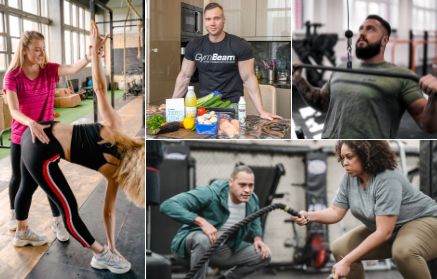
Add a comment